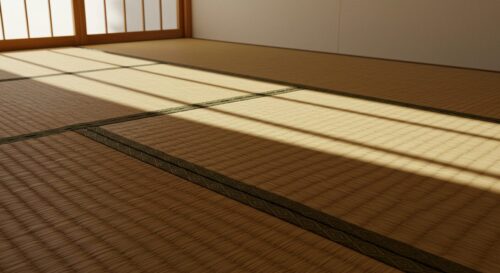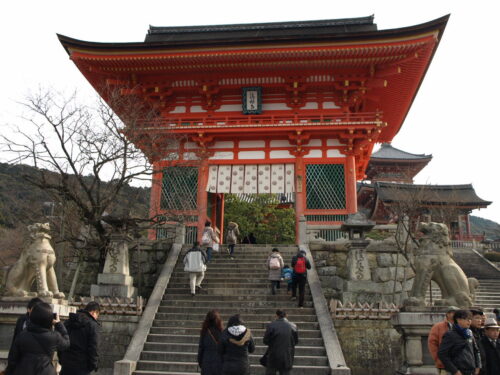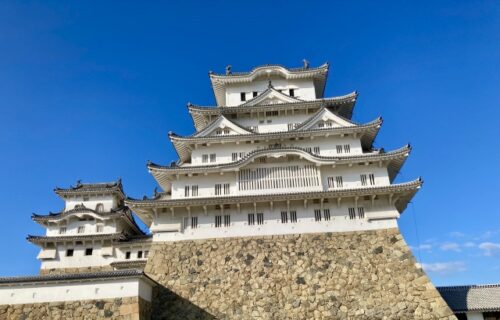Itsukushima Shrine’s Great Torii: Witness Japan’s Iconic Floating Gate
2025年10月26日
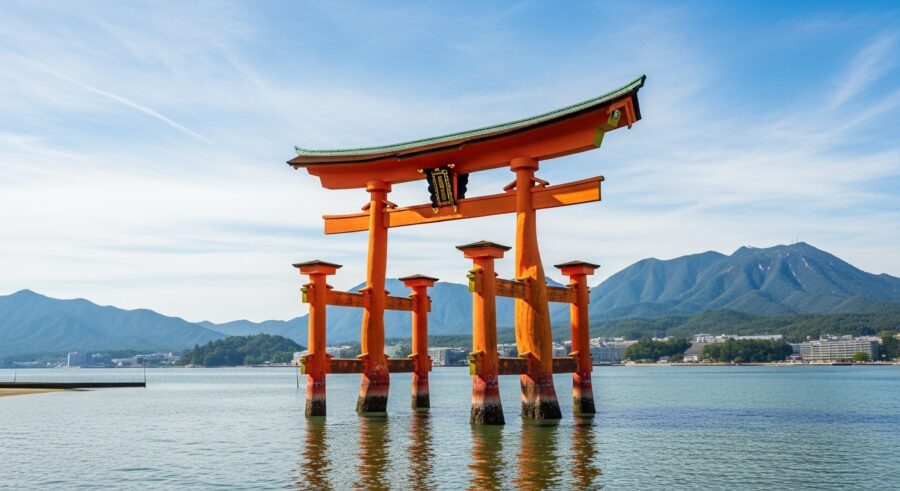
This comprehensive guide unravels the captivating allure of Itsukushima Shrine’s Great Torii, the iconic ‘floating gate’ that stands majestically in the waters off Miyajima Island. You will gain a deep understanding of how this UNESCO World Heritage site creates its mesmerizing illusion, exploring the dramatic transformation between high and low tides that allows visitors to either boat through its pillars or walk directly to its base. Delve into the rich history, intricate architectural marvels, and profound spiritual symbolism that define this revered Shinto landmark. Furthermore, this article provides essential insights for planning your visit, including the best times for breathtaking photography, detailed access information to Miyajima Island, and an overview of its recent renovations and current status, ensuring you are fully prepared to experience one of Japan’s most celebrated and picturesque cultural treasures.
| Feature | Description |
|---|---|
| Location | Miyajima Island (Itsukushima), Hiroshima Prefecture, Japan |
| Significance | Iconic “floating” Shinto gate, entrance to Itsukushima Shrine |
| UNESCO Status | Part of the Itsukushima Shinto Shrine World Heritage Site (inscribed 1996) |
| Primary Material | Camphor wood |
| Height | Approximately 16 meters (52 feet) |
| Unique Characteristic | Appears to float at high tide; accessible by foot at low tide |
目次
- 1 The Iconic Floating Torii Explained
- 1.1 High Tide vs Low Tide Experience at the Great Torii
- 1.2 High Tide: The Floating Illusion
- 1.3 Low Tide: Walking to the Base
- 1.4 Understanding the Tides
- 1.5 Architectural Marvel and Construction of the Itsukushima Shrine Torii
- 1.6 Unique Construction Without a Buried Foundation
- 1.7 Materials and Dimensions
- 1.8 The Ryōbu-torii Style
- 2 A Deep Dive into Its History and Symbolism
- 3 Planning Your Visit to the Great Torii
- 4 Itsukushima Shrine and Miyajima Island Beyond the Torii
- 5 Recent Renovations and Current Status of the Great Torii
- 6 Conclusion
The Iconic Floating Torii Explained
The Great Torii of Itsukushima Shrine is renowned worldwide for its captivating “floating” appearance, a spectacle orchestrated by the natural ebb and flow of the Seto Inland Sea. This iconic gate serves as a sacred boundary, marking the entrance to the revered Itsukushima Shrine complex on Miyajima Island.
High Tide vs Low Tide Experience at the Great Torii
The experience of witnessing the Great Torii transforms dramatically with the changing tides, offering two distinct and equally breathtaking views.
High Tide: The Floating Illusion
At high tide, the water level rises, submerging the base of the Torii and making it appear as if the massive vermilion gate is gracefully floating on the sea. This creates a magical and surreal atmosphere, with the shrine buildings themselves also seeming to float above the water. The reflection of the Great Torii in the water is a particularly spectacular sight, especially when illuminated by the sun or floodlights at night. During this time, the best views are often enjoyed from the shrine’s corridors or from a boat cruise around the bay.
Low Tide: Walking to the Base
Conversely, at low tide, the sea recedes, exposing the sandy flats around the Torii’s base. This provides a unique opportunity for visitors to walk directly to the gate, allowing for an up-close appreciation of its immense size and intricate details. You can observe features normally hidden, such as the barnacles clinging to the pillars and the textures of the ancient wood. It’s also possible to spot small marine life on the exposed tidal flats.
Understanding the Tides
To fully appreciate both perspectives, it is essential to check the daily tide times when planning your visit. The “floating” effect is most pronounced at full high tide, when the base is completely hidden beneath the water. Generally, the Great Torii appears to float when the tide level exceeds 250 cm, and visitors can walk to its base when the tide drops below 100 cm. There are typically two high tides and two low tides each day, with approximately 6 to 7 hours between a high and a low tide.
| Tide Level (approximate) | Experience |
|---|---|
| Over 250 cm | Torii appears to float on the water. |
| Below 100 cm | Visitors can walk to the base of the Torii. |
Architectural Marvel and Construction of the Itsukushima Shrine Torii
The Great Torii is not only a spiritual gateway but also a remarkable feat of traditional Japanese engineering and craftsmanship.
Unique Construction Without a Buried Foundation
Perhaps the most astonishing aspect of the Great Torii’s construction is that its six pillars are not buried in the seabed. Instead, the massive structure relies entirely on its own immense weight for stability. This ingenious design is further reinforced by the strategic placement of over 4 tons of stones within the top cross-piece, known as the kasagi, which helps to balance the entire structure. Beneath the pillars, the seabed is stabilized by numerous pilings made from whole pine trees, each approximately 3.6 meters long.
Materials and Dimensions
The current Great Torii, the eighth iteration, was completed in 1875. It stands approximately 16 meters (53 feet) tall and weighs around 60 tons, making it the largest wooden Torii gate in Japan. The twin main pillars are crafted from camphor trees, some over 500 years old, chosen for their natural resistance to rot and insects, which is crucial for a structure constantly exposed to the marine environment. The vibrant vermilion lacquer coating not only gives the gate its striking appearance but also serves as a protective layer against degradation and is traditionally believed to ward off evil spirits.
| Feature | Detail |
|---|---|
| Height | Approximately 16 meters (53 feet) |
| Weight | Approximately 60 tons |
| Main Pillars Material | Over 500-year-old camphor trees |
| Internal Weight (Kasagi) | Over 4 tons of stones |
| Construction Method | Relies on own weight, not embedded in seabed |
| Distance from Shrine | Approximately 160-200 meters offshore |
The Ryōbu-torii Style
The Great Torii is constructed in the distinctive Ryōbu-torii style, characterized by its four additional support pillars (two on each side of the main pillars). This architectural style was historically favored by shrines that had strong connections or influences from Buddhism. The intricate design and robust construction ensure the gate’s resilience against the elements, a testament to the enduring legacy of traditional Japanese architectural ingenuity.
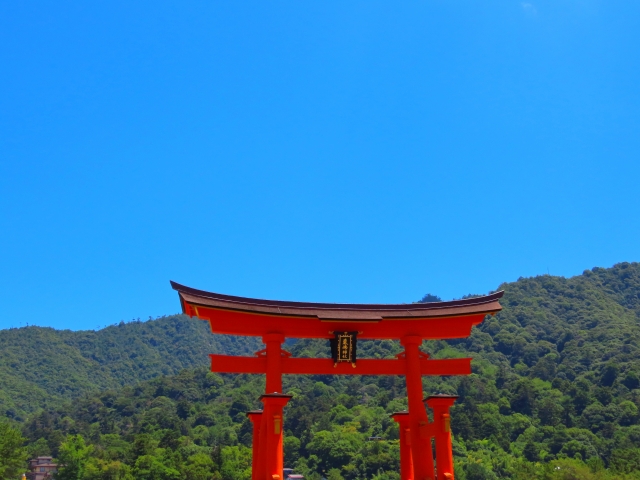
A Deep Dive into Its History and Symbolism
Origins and Reconstructions of the Great Torii
The history of Itsukushima Shrine, and by extension its iconic Great Torii, stretches back over 1,400 years, deeply intertwined with the spiritual reverence for Miyajima Island itself. The first shrine structure is believed to have been erected in 593 CE by Saeki Kuramoto, during the reign of Empress Suiko. Some records also suggest an initial construction around 569 CE.
The shrine’s current magnificent form is largely attributed to Taira no Kiyomori, a powerful warlord of the Heian period (794–1185). Around 1168 CE, Kiyomori, as governor of Aki Province, undertook extensive renovations and expansions, transforming the shrine into a grand complex that reflected the aesthetic of the Shinden-zukuri style of aristocratic residences.
The Great Torii itself has undergone numerous reconstructions over the centuries due to natural disasters and the inherent impermanence of wooden structures exposed to the elements. The current vermilion gate is the eighth iteration, having been built in 1875. It is a testament to traditional Japanese craftsmanship, constructed primarily from decay-resistant camphor wood and coated with vibrant vermilion lacquer to protect it from degradation. This massive structure, weighing approximately 60 tons (including 7 tons of stones placed within its upper lintel), stands upright solely by its own weight and is not embedded in the seabed.
Here is a timeline of the Great Torii’s known major constructions:
| Year | Event | Details |
|---|---|---|
| 569 CE / 593 CE | First Torii/Shrine erected | Believed to have been built by Saeki Kuramoto. |
| 1168 CE | Major reconstruction and expansion | Undertaken by Taira no Kiyomori, establishing the iconic “floating” design. |
| 1547 CE | Torii rebuild | The present six-pillar (Ryōbu-style) dates back to this reconstruction. |
| 1875 CE | Current Great Torii constructed | The eighth iteration of the gate. |
Spiritual Significance in Shinto and the Itsukushima Shrine
The Great Torii of Itsukushima Shrine is more than just an architectural marvel; it is a profound symbol within Japan’s indigenous Shinto religion. Torii gates universally serve as symbolic gateways marking the transition from the mundane, secular world to the sacred precincts of a Shinto shrine. They are considered places where kami (deities, spirits, or natural phenomena) are welcomed and are believed to travel through.
Itsukushima Shrine is dedicated to the three daughters of Susano-o no Mikoto: Ichikishimahime no Mikoto, Tagorihime no Mikoto, and Tagitsuhime no Mikoto. These three female deities are revered as goddesses of seas and storms, making their shrine on an island particularly fitting for maritime safety and prosperity.
The island of Miyajima itself, whose name Itsukushima translates to “island dedicated to the gods,” has been worshipped as a god or sacred entity since ancient times. This inherent sacredness is the reason for the shrine’s unique construction over the water. Historically, commoners were forbidden from setting foot on the island to maintain its purity, and instead, they had to approach the shrine by boat, passing through the Great Torii as a purification ritual before reaching the sacred space.
The vibrant vermilion color of the torii is also deeply symbolic in Shinto, believed to ward off evil spirits and disasters. The distinctive four-legged style of the Itsukushima Great Torii, known as Ryōbu Torii, is particularly noteworthy. This style, characterized by additional supporting pillars in front of and behind the main posts, reflects the influence of Ryōbu Shintō, a medieval school that blended esoteric Japanese Buddhism with Shinto beliefs.
Shinto emphasizes a deep connection to nature, viewing kami as not separate from nature but inherent within it. The harmonious integration of the shrine’s architecture with the surrounding natural beauty of Miyajima Island, particularly the “floating” appearance of the torii and shrine at high tide, beautifully embodies this core Shinto principle.
Planning Your Visit to the Great Torii
A visit to Itsukushima Shrine’s Great Torii is a highlight of any trip to Japan, offering diverse experiences depending on the time of day and the tide. Strategic planning will allow you to witness both its iconic “floating” appearance and the opportunity to walk directly to its base.
Best Times for Photography of the Floating Torii
The appearance of the Great Torii is dramatically influenced by the ebb and flow of the Seto Inland Sea’s tides. To capture its various majestic forms, understanding the tide schedule is paramount.
- High Tide: For the classic “floating” illusion, where the vermilion gate appears to stand gracefully on the water, aim to visit when the tide level is above 250 cm. This also allows for stunning reflections of the Torii and the shrine buildings in the water.
- Low Tide: At low tide, when the water recedes to below 100 cm, visitors can walk directly to the base of the Great Torii. This provides a unique opportunity to appreciate its immense scale and intricate construction up close, observing details usually hidden by the sea.
- Sunrise and Sunset: Beyond the tides, the soft light of sunrise and sunset can cast a magical glow on the Torii, enhancing its photographic appeal.
- Evening Illumination: After sunset, the Great Torii and the Itsukushima Shrine complex are illuminated daily until approximately 11:00 PM, offering a breathtaking and ethereal view.
The interval between high and low tides is typically around six to seven hours. To maximize your visit and experience both tidal states, it is highly recommended to consult a reliable Miyajima tide table online prior to your trip. Many local tourism resources provide detailed tide schedules, allowing you to plan your itinerary effectively.
Access to Miyajima Island and Itsukushima Shrine
Miyajima Island, also known as Itsukushima, is easily accessible from Hiroshima. The primary gateway is through Miyajimaguchi on the mainland.
Getting to Miyajimaguchi Station
From Hiroshima Station, take the JR Sanyo Line to Miyajimaguchi Station. This train journey typically takes about 28 minutes, with trains departing approximately every 15 minutes. Holders of the Japan Rail Pass can utilize this train service at no additional cost.
Ferry to Miyajima Island
Upon arrival at Miyajimaguchi Station, the ferry terminal is a short walk away. Two main ferry companies operate services to Miyajima Island: JR West Miyajima Ferry and Miyajima Matsudai Tourist Ship.
Both ferry services charge an adult fare of ¥200 for a one-way trip, with the journey lasting approximately 10 minutes. A separate Miyajima visitor tax of ¥100 is also charged.
| Ferry Operator | Key Features |
|---|---|
| JR West Miyajima Ferry |
|
| Miyajima Matsudai Tourist Ship |
|
For a more direct, albeit more expensive, option from Hiroshima city center, including near the Peace Memorial Park, there are direct ferry services such as the World Heritage Sea Route operated by Aqua Net Hiroshima. A round trip can cost around ¥4,000.
Viewing Points and Experiences Around the Great Torii
Once on Miyajima Island, the Great Torii and Itsukushima Shrine are easily accessible by foot from the ferry pier. The island offers a variety of perspectives and experiences to appreciate this iconic landmark.
- From the Shoreline and Shrine Grounds: At high tide, the shrine buildings themselves appear to float, and the view of the Torii from within the shrine complex is magnificent. At low tide, walking directly onto the tidal flats to the base of the Torii allows for an unparalleled close-up experience.
- Omotesando Shopping Street: This lively street, located near the pier, provides views of the Torii as you approach the shrine and is an excellent place to find souvenirs and local delicacies.
- Boat Cruises:
- Daytime Ferry Views: As mentioned, the JR West Miyajima Ferry’s “Great Torii Route” offers excellent views from the water during its regular service.
- Night Cruises: To witness the illuminated Great Torii and Itsukushima Shrine after dark, consider taking a dedicated night cruise. These cruises typically last about 30 minutes and provide a magical perspective of the “floating” gate against the night sky. Reservations are generally required, and some ryokan (traditional Japanese inns) on the island offer special night cruise packages for their guests.
- Private Charters: For a more exclusive experience, private charter cruises are also available.
- Overnight Stay on Miyajima: Staying overnight on Miyajima Island allows visitors to experience the Great Torii and Itsukushima Shrine in both high and low tide conditions, as well as its illuminated beauty after the day-trippers have departed. The evenings are significantly quieter and offer a more serene atmosphere.
Itsukushima Shrine and Miyajima Island Beyond the Torii
While the iconic Great Torii and the main Itsukushima Shrine complex are undoubtedly the stars of Miyajima Island, a deeper exploration reveals a wealth of cultural, historical, and natural wonders that extend far beyond these famous landmarks. The island, a UNESCO World Heritage Site, offers a rich tapestry of experiences that invite visitors to linger and discover its many hidden charms.
Exploring the Itsukushima Shrine Complex
Beyond the “floating” Great Torii, the main Itsukushima Shrine complex itself is an architectural marvel built over the water, embodying the elegant Shinden-zukuri style of the Heian period. This unique design creates the illusion that the entire shrine floats on the sea during high tide. The complex comprises multiple buildings, including the main hall (Honden), the offering hall (Heiden), the worship hall (Haiden), and the purification hall (Haraedono), all connected by extensive covered corridors. These vermilion-lacquered corridors stretch approximately 260 meters over the water and feature ingeniously spaced floorboards that allow seawater to flow through, preventing damage from the tides.
A particularly unique feature within the shrine grounds is the Noh stage, dating back to 1680. It holds the distinction of being the only Noh stage in Japan built directly over the water, and it is designated an Important Cultural Property. Traditional Noh performances, known as shin-noh, are still held here as offerings to the deities. The island’s profound spiritual significance is underscored by its historical purity; since 1878, births and deaths have been prohibited on Miyajima to maintain the sanctity of the shrine.
Miyajima’s Other Attractions
Miyajima Island offers a diverse range of attractions that complement the spiritual grandeur of Itsukushima Shrine:
Mount Misen
As the highest peak on Miyajima, Mount Misen provides breathtaking panoramic views of the Seto Inland Sea and, on clear days, even Hiroshima City. Visitors can reach the summit via the Miyajima Ropeway, which offers a scenic ascent over ancient forests and granite peaks. For those seeking a more active experience, several hiking trails lead to the summit, typically taking 1.5 to 2 hours from the base, often starting near Daisho-in Temple. At the summit, you’ll find the Misen Main Hall and the Hall of the Spiritual Flame, where an eternal fire, said to have been lit by the revered monk Kobo Daishi over 1,200 years ago, continues to burn. A spark from this flame was even used to ignite the Flame of Peace in Hiroshima’s Peace Park.
Daisho-in Temple
Nestled at the base of Mount Misen, Daisho-in Temple is one of the most important temples of Shingon Buddhism on Miyajima, founded by Kobo Daishi in 806 AD. This serene temple complex features a rich collection of buildings, statues, and religious artifacts. Highlights include hundreds of unique Jizo statues, often adorned with knitted hats, and prayer wheels (Mani Wheels) lining the steps. Spinning these wheels is believed to bestow blessings equivalent to reading the Buddhist sutras inscribed on them. Another intriguing feature is the Henjokutsu Cave, which houses 88 miniature statues, each representing one of the temples on the famous Shikoku Pilgrimage, allowing visitors to symbolically complete the spiritual journey in one location. The temple also features a sand mandala created by visiting Tibetan Buddhist priests.
Five-Story Pagoda and Senjokaku
Perched on a hill near Itsukushima Shrine, the vibrant vermilion Five-Story Pagoda (Goju-no-to) and the expansive Senjokaku (Hall of a Thousand Tatami Mats) offer striking architectural beauty and historical depth. The Five-Story Pagoda, originally constructed in 1407 and restored in 1533, stands approximately 30 meters tall and showcases a flamboyant Chinese-style exterior with Japanese flourishes. Adjacent to it, Senjokaku, officially known as Hokoku Shrine, is the largest wooden structure on Miyajima. It was commissioned by the powerful warlord Toyotomi Hideyoshi in 1587 as a hall for chanting Buddhist sutras for fallen soldiers. However, construction ceased with Hideyoshi’s death, leaving parts of the ceiling and walls unfinished. In 1872, the incomplete building was dedicated to Hideyoshi’s soul.
Miyajima Omotesando Shopping Street
For a taste of local life and souvenirs, the Miyajima Omotesando Shopping Street is a bustling 350-meter-long arcade leading to Itsukushima Shrine. This lively street is lined with shops and eateries offering Miyajima’s specialty delicacies and traditional crafts. Key items to look for include:
| Item | Description |
|---|---|
| Grilled Oysters | A local specialty, often enjoyed fresh from street stalls. |
| Momiji Manju | Maple-leaf-shaped cakes with various fillings like sweet red bean paste, chocolate, or custard. Many shops offer freshly baked versions. |
| Miyajima Shamoji | Traditional wooden rice paddles, considered good luck charms. The world’s largest wooden rice scoop is on display on the street. |
| Miyajima Carvings | Intricate wooden crafts reflecting the island’s natural beauty. |
| Oyster Soy Sauce | A unique local product, often available for tasting before purchase. |
Wild Deer
Miyajima is also famous for its wild Sika deer, which roam freely throughout the island, often seen near the shrine and in the town. While historically revered as messengers of the gods in Shinto, they are now generally considered wild animals. Unlike the deer in Nara, visitors are advised not to feed them, as they can be quite assertive, especially if they smell food.
Miyajima Public Aquarium
Located towards the western end of the island, the Miyajima Public Aquarium provides an opportunity to explore the diverse marine life of the Seto Inland Sea and beyond. It features approximately 380 species and 15,000 aquatic animals, including finless porpoises native to the region.
Recent Renovations and Current Status of the Great Torii
The iconic Great Torii Gate of Itsukushima Shrine, a UNESCO World Heritage site, underwent a significant and extensive renovation project to preserve its structural integrity and vibrant appearance for future generations. This vital restoration work marked the first major overhaul in approximately 70 years, addressing the natural wear and tear caused by its unique marine environment.
The Reiwa Renovation Project: Timeline and Scope
The comprehensive renovation, often referred to as the Reiwa Renovation, commenced in June 2019 and officially concluded on December 18, 2022. During this period, the revered gate was encased in scaffolding and covered with translucent sheeting, allowing for essential repairs while offering visitors a unique, albeit obscured, glimpse of the structure.
The primary objectives of the renovation were to combat damage from prolonged exposure to seawater and insect activity, as well as to reinforce the gate’s ancient pillars. A detailed survey of the gate was conducted to inform the restoration process. The work involved several critical components:
| Renovation Aspect | Details of Work |
|---|---|
| Pillar Reinforcement | The main pillars, which had suffered deterioration, were reinforced with stainless steel rings to enhance earthquake resistance. |
| Repainting | The gate received a fresh coat of its distinctive vermilion lacquer, utilizing durable chemical pigments to ensure its iconic color endures. |
| Reroofing | The hiwadabuki (cypress bark) roofing and associated copper plates were replaced. |
| Scaffolding Removal | Most of the scaffolding was progressively removed by October 2022, with the full removal completed by the end of 2022, signaling the gate’s return to full visibility. |
For a period in 2021, a temporary bridge was erected to connect the island with the Great Torii, facilitating easier access for construction workers. This temporary structure also presented an unusual opportunity for visitors to approach the torii on foot even during high tide, offering a rare perspective of the gate. The bridge was subsequently dismantled by December 2022.
Current Status and Visitor Experience
As of December 2022, the Great Torii of Itsukushima Shrine stands fully restored and resplendent in its vibrant vermilion hue. A Shinto ritual was held to commemorate the completion of the three-and-a-half-year repair project, marking a new chapter for this cherished landmark. Visitors to Miyajima Island can once again witness the “floating” gate in its full, unobstructed glory, whether viewed from the shore, from the shrine complex, or from a boat cruise in the Seto Inland Sea. The successful completion of this renovation ensures that the Great Torii continues to serve as a powerful symbol of Japanese culture and spirituality for many years to come.
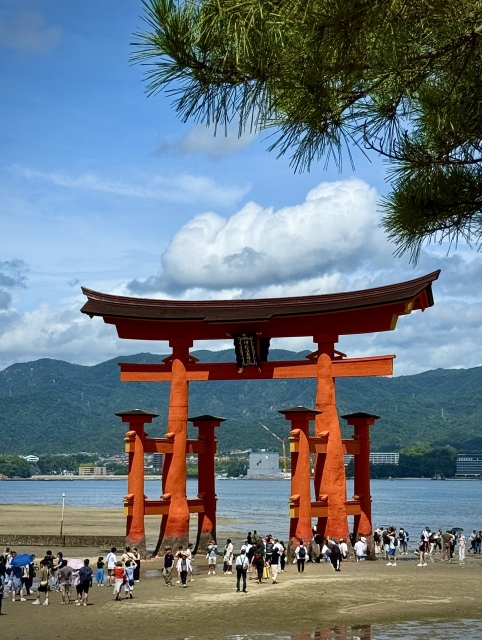
Conclusion
The Great Torii of Itsukushima Shrine stands as an enduring emblem of Japan’s profound spiritual heritage and architectural ingenuity. Recognized globally as a symbol of Japan and a UNESCO World Heritage site, it is celebrated as one of the nation’s three most scenic views.
Its iconic “floating” appearance, dramatically shifting with the ebb and flow of the tide, offers visitors a truly unique and unforgettable spectacle, embodying the harmonious relationship between nature and human creation. At high tide, the gate appears to float magically on the sea, with the effect strongest when the tide level is over 250 cm. Conversely, at low tide, visitors can walk directly to its base, an experience possible when the tide level is below 100 cm.
More than just a picturesque landmark, this magnificent gate serves as the sacred entrance to a site deeply rooted in Shinto traditions and centuries of history. While the first torii is believed to have been erected as early as 569 CE, the current structure dates to 1875. Dedicated to the three Shinto goddesses of seas and storms, Itsukushima Island itself has long been revered as sacred, traditionally prohibiting births and deaths to maintain its purity.
Architecturally, the Great Torii is a marvel, constructed primarily from decay-resistant camphor wood and coated in vermilion lacquer. Remarkably, it stands upright without being embedded in the seabed, relying instead on its substantial weight, which includes approximately 7 tons of stones placed within its upper lintel, and precise construction.
A visit to Miyajima Island, home to Itsukushima Shrine, transcends merely viewing the torii; it’s an immersive journey into a landscape where spirituality and natural beauty intertwine. Beyond the gate, the island offers the serene Itsukushima Shrine complex, the scenic Mount Misen accessible by ropeway, the tranquil Daisho-in Temple, and vibrant shopping and dining experiences.
The Great Torii underwent a major renovation project from June 2019 to December 2022, ensuring its preservation for future generations. This commitment to maintaining such an irreplaceable cultural treasure underscores its lasting legacy and continued appeal, inviting visitors from around the globe to connect with Japan’s profound cultural and spiritual essence.
Key Aspects of the Itsukushima Shrine Great Torii
| Aspect | Significance |
|---|---|
| Iconic Status | Recognized worldwide as a symbol of Japan and a UNESCO World Heritage site. |
| Unique “Floating” Feature | Its appearance dramatically changes with the tides, offering distinct high and low tide viewing experiences. |
| Spiritual Gateway | Serves as the sacred entrance to Itsukushima Shrine, embodying Shinto beliefs and purity, dedicated to goddesses of seas and storms. |
| Architectural Marvel | A testament to traditional Japanese construction, built without being buried in the seabed, relying on its own weight. |
| Cultural Heritage | Represents centuries of history, resilience, and a deep connection between nature and human spirituality, with the current gate dating to 1875. |
| Recent Preservation | Underwent major renovation from June 2019 to December 2022 to ensure its longevity. |
